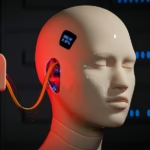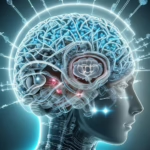The Intersection of AI and Mechatronics: Redefining Automation
Introduction
The fields of artificial intelligence (AI) and mechatronics have progressed significantly over the past few years, leading to unprecedented changes in automation. Their intersection represents a pivotal evolution in technology, where machines are not just programmed to perform tasks, but can learn and adapt to new situations autonomously. This integration is reshaping industries from manufacturing to healthcare, enhancing efficiency, safety, and overall productivity.
Understanding Mechatronics
Definition and Components
Mechatronics is an interdisciplinary field that combines mechanical engineering, electronics, computer science, and control engineering. Its core aim is to design and create intelligent products and processes that improve automation. Mechatronics systems include:
- Sensors: Devices that gather data from the environment.
- Actuators: Mechanisms that convert electrical signals into physical action.
- Control Systems: Algorithms and software that interpret sensor data and manage actuators.
- Mechanical Structures: The physical frameworks that house and support the operational elements of mechatronic systems.
Evolution of Mechatronics
Historically, mechatronics emerged as a response to the need for automation in manufacturing processes. As products became more complex and production demands increased, the integration of electronics and computing into mechanical systems became essential. With advancements in microcontrollers and sensor technology, mechatronic systems have evolved to become more sophisticated, merging seamlessly with AI.
The Role of Artificial Intelligence in Automation
Definition and Capabilities
Artificial intelligence refers to systems capable of mimicking cognitive functions associated with human intelligence, such as learning, reasoning, and problem-solving. In the context of automation, AI allows machines to:
- Learn from data: Using algorithms to analyze and make sense of vast datasets.
- Make decisions: Assessment of situations based on learned information to decide on actions.
- Adapt to change: Adjusting operations based on new data or unexpected conditions.
AI Techniques in Automation
- Machine Learning (ML): The use of statistical techniques to enable machines to improve their performance on tasks through experience.
- Deep Learning: A subset of ML involving neural networks with many layers that can model complex relationships in data.
- Natural Language Processing (NLP): allowing machines to understand and process human language.
The Fusion of AI and Mechatronics
Enhancing Mechatronic Systems
The integration of AI into mechatronics leads to significant benefits, including:
- Increased Flexibility: AI enables mechatronic systems to operate in varied environments and adapt to new tasks without extensive reprogramming.
- Improved Efficiency: AI can optimize processes in real-time, leading to significant reductions in waste and operational costs.
- Predictive Maintenance: Machine learning algorithms can predict equipment failures by analyzing historical and real-time sensor data.
Case Studies
Manufacturing
In manufacturing, companies like Siemens and Bosch leverage AI-driven robotics to enhance assembly lines. By implementing AI-powered vision systems, robots can detect defects and adjust their operations accordingly. This adaptability reduces downtime and increases output quality.
Healthcare
The healthcare industry has also embraced the fusion of AI and mechatronics. Robotic surgery systems, such as the da Vinci Surgical System, use AI to assist surgeons in performing delicate procedures with precision. AI algorithms can analyze patient data to provide insights that enhance surgical outcomes.
Challenges at the Intersection of AI and Mechatronics
Technical Challenges
- Data Quality and Availability: For AI algorithms to function optimally, they require high-quality data. In many mechatronic systems, data may be noisy or incomplete.
- Integration Complexity: Merging AI algorithms with existing mechatronic systems can be a complex task, requiring specialized skills and knowledge.
- Real-time Processing: Many applications require real-time decision-making, which can be challenging given the computational demands of AI.
Ethical and Social Challenges
- Job Displacement: With increased automation, there is a genuine concern regarding job loss in specific sectors. Workers may need to upskill or transition to new roles that focus on human oversight or system management.
- Data Privacy: The use of AI often requires the collection and analysis of personal data, raising privacy concerns for individuals.
- Decision Transparency: As AI systems become more autonomous, understanding the rationale behind their decisions becomes increasingly critical, particularly in areas like healthcare and finance.
The Future of AI and Mechatronics
Emerging Trends
-
Collaborative Robots (Cobots): Cobots work alongside humans, enhancing productivity while ensuring safety. They leverage AI to learn about the human workplace and can adapt their operations to fit the tasks they share with human workers.
-
Smart Factories: The concept of Industry 4.0 emphasizes the use of AI and IoT (Internet of Things) in creating interconnected systems that enhance productivity. Smart factories can autonomously manage processes, monitor equipment health, and respond dynamically to market demands.
-
Autonomous Vehicles: In the automotive industry, combining AI with mechatronics leads to the development of autonomous driving technologies. Companies like Tesla and Waymo are heavily investing in AI systems that allow vehicles to navigate with minimal human intervention.
Future Prospects
The intersection of AI and mechatronics is forecasted to grow exponentially in the coming years, impacting various sectors worldwide. As technology advances, we may witness a more profound integration where machines not only perform tasks but also engage in complex decision-making processes that traditionally required human intelligence.
Conclusion
The fusion of AI and mechatronics is revolutionizing automation, bringing about changes that enhance efficiency, productivity, and adaptability in numerous sectors. While challenges exist, the potential for innovation in this area is vast. As industries continue to embrace these technologies, the future promises to redefine how we understand and implement automation, creating a world where intelligent machines and systems play an intrinsic role in our daily lives.
References
- [Modern Footnote Source].
- AI and Mechatronics: Bridging Two Frontiers.
- The Role of Robotics in Manufacturing Today.
- Challenges and Opportunities in Modelling of Mechatronic Systems.
- AI Applications in Healthcare: Innovations and Challenges.
This is a condensed overview without detailed in-depth discussions. If you are looking for a more in-depth exploration or specific sections expanded, please let me know how I can assist further!

























Add Comment